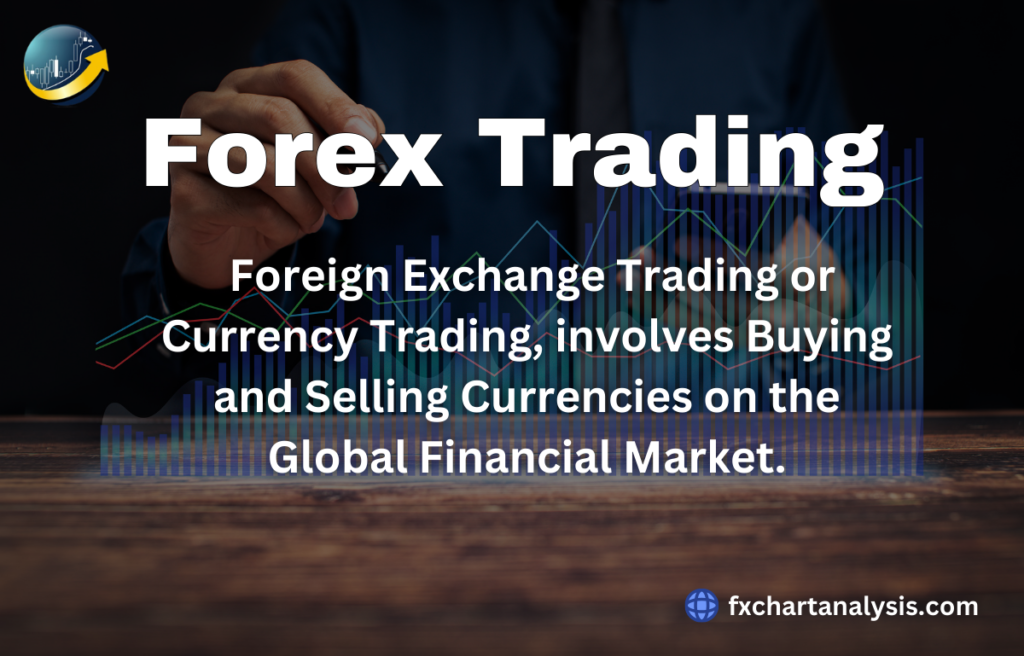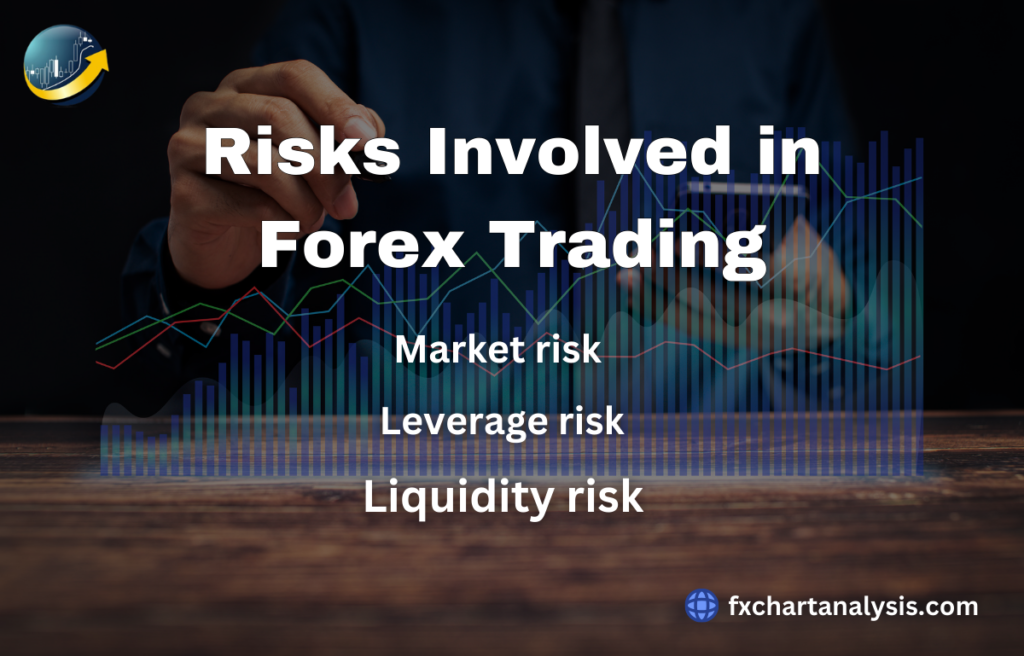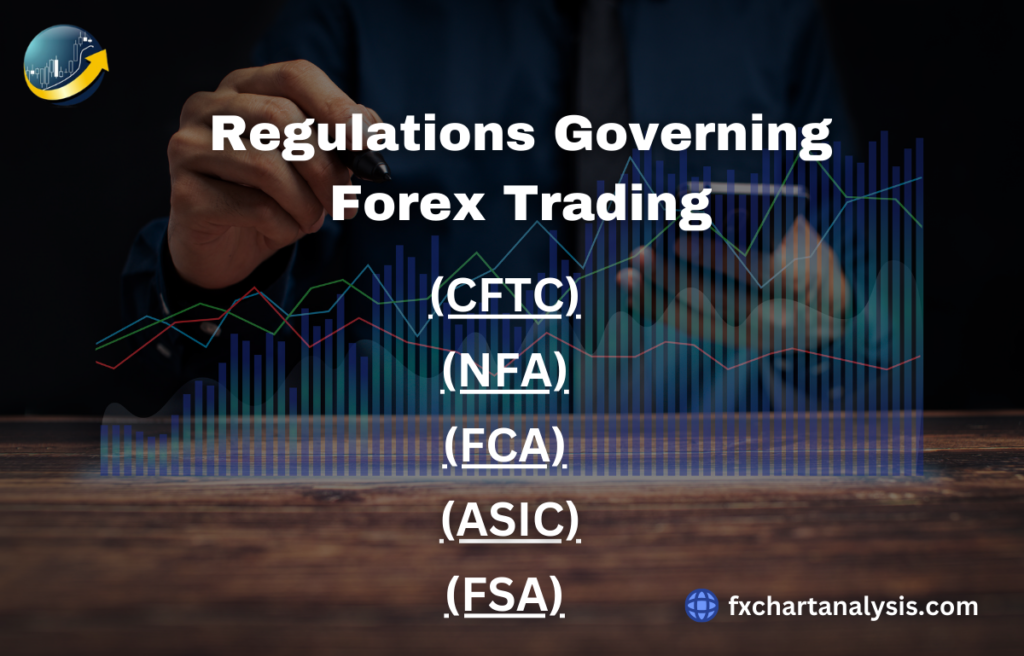Forex trading, also known as foreign exchange trading or currency trading, involves buying and selling currencies on the global financial market. It is one of the largest and most liquid markets in the world, with a daily trading volume exceeding $6 trillion. The primary goal of forex trading is to profit from changes in exchange rates between currencies. Unlike stock markets, forex operates 24 hours a day, five days a week, allowing traders to react swiftly to global economic events and market news.

The importance of forex trading lies in its role in the global economy. It facilitates international trade and investment by enabling businesses to convert one currency into another easily. For example, a U.S. company that imports goods from Europe will need to exchange U.S. dollars for euros. This transaction is made possible through the forex market. Additionally, forex trading allows central banks and governments to maintain currency stability and manage inflation by intervening in the currency markets.
For individual investors, forex trading offers an opportunity to diversify their investment portfolios and potentially achieve high returns. The ability to use leverage in forex trading enables traders to control large positions with a relatively small amount of capital, increasing the profit potential. However, this also increases the risk, making it crucial for traders to understand the market dynamics thoroughly before engaging in forex trading.
How Does Forex Trading Work?
Forex trading operates on the principle of exchanging one currency for another in pairs, such as EUR/USD (euro/US dollar). When you trade in the forex market, you are simultaneously buying one currency and selling another. The first currency in the pair is the base currency, and the second is the quote currency. The price of a currency pair represents how much of the quote currency is needed to purchase one unit of the base currency. For example, if the EUR/USD pair is quoted at 1.1000, it means that 1 euro is equivalent to 1.1000 US dollars.
Trades in the forex market are conducted through brokers or market makers, who provide traders with access to the market. Transactions can be carried out using various trading platforms, which offer real-time price data, charting tools, and order execution capabilities. Traders can enter the market by placing orders, such as market orders, limit orders, or stop orders, depending on their trading strategy and market conditions. The forex market’s decentralized nature, with no central exchange, means that trades can occur over-the-counter (OTC) directly between parties.
Forex trading involves the use of leverage, which allows traders to control larger positions than their initial investment. For instance, with a leverage ratio of 100:1, a trader can control a $100,000 position with just $1,000 of their own capital. While leverage can amplify profits, it also magnifies losses, making risk management a critical aspect of successful forex trading. Understanding market indicators, technical analysis, and economic news are essential skills for navigating the forex market effectively.
What Are the Key Terminologies in Forex Trading?
Understanding the key terminologies in forex trading is crucial for anyone looking to participate in this market. One of the fundamental terms is “pip” which stands for “percentage in point” or “price interest point.” A pip is the smallest price movement that a currency pair can make, typically measured in four decimal places for most pairs. For example, if the EUR/USD moves from 1.1000 to 1.1001, that 0.0001 increase is one pip. Pips are essential in calculating profits and losses in forex trading.
Another important term is “leverage” which refers to the ability to control a large position with a relatively small amount of capital. Leverage is expressed as a ratio, such as 50:1 or 100:1, indicating how much larger the controlled position is compared to the trader’s actual capital. While leverage can enhance potential profits, it also increases the risk of significant losses, making it a double-edged sword in forex trading.
“Spread” is another critical concept, representing the difference between the bid (buy) price and the ask (sell) price of a currency pair. The spread is how brokers make money in forex trading, and it can vary depending on the currency pair, market conditions, and the broker’s pricing model. A narrower spread generally indicates a more liquid market, while wider spreads can occur in less liquid or more volatile markets. Understanding these terminologies helps traders make informed decisions and effectively manage their trading activities in the forex market.
Major Currency Pairs in Forex
In the Forex market, major currency pairs are the most traded and liquid pairs, consisting of the most prominent global currencies. The major pairs include EUR/USD (Euro/US Dollar), GBP/USD (British Pound/US Dollar), USD/JPY (US Dollar/Japanese Yen), and USD/CHF (US Dollar/Swiss Franc). These pairs are highly liquid due to their high trading volume, which often results in tighter spreads and lower transaction costs. Their significant trading volume also means they are less volatile compared to minor and exotic pairs, making them a popular choice for many traders.
Another characteristic of major currency pairs is their strong correlation with global economic events and policies. For example, the EUR/USD pair is heavily influenced by economic data and political developments in the Eurozone and the United States. The GBP/USD pair, often referred to as “Cable” is sensitive to economic indicators from both the UK and the US. Understanding the factors that influence these major pairs can provide traders with valuable insights into potential market movements.
What You Need to Start Forex Trading?
Starting forex trading requires a few key elements to ensure you are well-prepared for the market. First, you’ll need a reliable trading platform provided by a reputable forex broker. This platform is where you’ll execute trades, analyze charts, and manage your positions. Most brokers offer platforms like MetaTrader 4 or 5, which come equipped with various tools and indicators to help you make informed decisions. Additionally, choosing a broker that offers a user-friendly interface and robust customer support can enhance your trading experience.
Second, it’s essential to have a solid understanding of forex market fundamentals and trading strategies. This includes learning about different types of orders, risk management techniques, and market analysis methods. Many traders start with demo accounts to practice without risking real money. Finally, setting a clear trading plan and risk management strategy is crucial. This plan should outline your trading goals, risk tolerance, and the strategies you plan to use. Proper preparation and ongoing education are key to becoming a successful forex trader.
How to Choose the Best Forex Broker?
Selecting the right forex broker is a crucial step for successful trading. Begin by considering factors such as regulation and reputation. A broker regulated by a reputable financial authority, such as the FCA in the UK or the NFA in the US, is generally more trustworthy and reliable. Regulation ensures that the broker adheres to strict financial standards and provides a level of protection for your funds. Additionally, researching broker reviews and feedback from other traders can provide valuable insights into their reliability and service quality.
Another important factor is the trading conditions offered by the broker, including spreads, leverage, and commissions. Look for a broker that provides competitive spreads and reasonable leverage options, as these can significantly impact your trading costs and potential returns. It’s also beneficial to choose a broker that offers a range of trading tools, educational resources, and customer support. Testing the broker’s platform with a demo account can help you assess its functionality and suitability for your trading needs before committing real money.
How to Use Technical Analysis in Forex Trading?
Technical analysis is a key tool in forex trading that involves analyzing historical price data to forecast future price movements. Traders use various chart patterns and technical indicators to identify trends, support and resistance levels, and potential entry and exit points. Popular indicators include moving averages, Relative Strength Index (RSI), and Bollinger Bands. These tools help traders understand market trends and potential price reversals, aiding in making informed trading decisions.
To effectively use technical analysis, traders often begin by analyzing price charts to identify patterns such as head and shoulders, double tops and bottoms, or trendlines. These patterns can provide insights into potential market movements and trend reversals. Combining multiple indicators can enhance the accuracy of predictions; for example, using moving averages to identify trend direction and RSI to gauge overbought or oversold conditions can offer a more comprehensive view of the market.
It’s important to remember that while technical analysis can provide valuable insights, it is not foolproof. No method can guarantee success, and market conditions can change rapidly. Traders should use technical analysis in conjunction with other methods, such as fundamental analysis and market sentiment evaluation, to develop a more robust trading strategy.
How to Develop a Winning Forex Trading Strategy?
Developing a winning forex trading strategy involves a systematic approach that combines thorough research, clear objectives, and disciplined execution. Start by defining your trading goals, such as target returns and risk tolerance. Your strategy should outline how you plan to achieve these goals, including specific entry and exit criteria, risk management rules, and trading styles (e.g., day trading, swing trading). A well-defined strategy helps maintain consistency and discipline, which are crucial for long-term success.
Next, incorporate both technical and fundamental analysis into your strategy. Technical analysis involves using charts and indicators to make trade decisions, while fundamental analysis focuses on economic indicators, news events, and market trends. By integrating these approaches, you can develop a more comprehensive view of the market and make informed trading decisions. Testing your strategy on historical data through backtesting can help assess its effectiveness and make necessary adjustments before applying it to live trading.
Finally, risk management is a critical component of any winning trading strategy. Determine your risk per trade and use stop-loss orders to protect your capital from significant losses. Additionally, ensure proper position sizing to manage leverage and avoid overexposure to any single trade. Regularly reviewing and refining your strategy based on performance and changing market conditions will help you adapt and improve over time.
Best Forex Trading Indicators
Forex trading indicators are essential tools for analyzing market conditions and making informed trading decisions. Some of the best and most widely used indicators include Moving Averages, Relative Strength Index (RSI), and Bollinger Bands. Moving Averages, such as the Simple Moving Average (SMA) and Exponential Moving Average (EMA), help smooth out price data and identify trends by averaging prices over a specific period. They are useful for determining the direction of the trend and potential support or resistance levels.
The Relative Strength Index (RSI) is a momentum oscillator that measures the speed and change of price movements, indicating whether a currency pair is overbought or oversold. An RSI value above 70 suggests that a currency is overbought, while a value below 30 indicates that it is oversold. Bollinger Bands consist of a middle band (SMA) and two outer bands that represent standard deviations away from the middle band. These bands adjust to volatility and can signal potential reversal points when the price moves close to or breaks out of the bands.
Risks Involved in Forex Trading
Forex trading involves several risks that traders should be aware of to manage their positions effectively. One major risk is market risk, which arises from the potential for adverse price movements in currency pairs. Forex markets can be highly volatile, with prices influenced by a variety of factors including economic data, geopolitical events, and market sentiment. This volatility can lead to significant losses if trades move against your position. Proper risk management strategies, such as setting stop-loss orders and limiting trade sizes, can help mitigate these risks.

Another risk is leverage risk, as forex trading often involves the use of leverage. Leverage allows traders to control a large position with a relatively small amount of capital, amplifying both potential profits and losses. While leverage can increase your profit potential, it also magnifies your losses if the market moves against your position. It’s crucial to use leverage cautiously and to fully understand how it affects your trading account and risk exposure.
Lastly, liquidity risk is another concern, particularly for less-traded currency pairs or during times of market stress. In periods of low liquidity, large trades can have a significant impact on the market price, leading to slippage where orders are filled at less favorable prices than expected. This can affect the execution of your trades and potentially lead to unexpected losses. Ensuring you trade in highly liquid pairs and understanding market conditions can help manage liquidity risk.
How to Manage Risk in Forex Trading?
Effective risk management is crucial for long-term success in forex trading and involves several strategies to protect your capital and minimize losses. One fundamental approach is to use stop-loss orders, which automatically close a trade when the price reaches a predetermined level. This helps limit potential losses if the market moves against your position. Additionally, setting take-profit orders can secure gains by closing a trade when the price reaches a desired profit level.
Another important aspect of risk management is position sizing, which involves determining the appropriate amount of capital to allocate for each trade. Using a consistent percentage of your trading account for each trade helps prevent significant losses and manage overall risk exposure. Leverage should also be used cautiously, as it can magnify both profits and losses. By employing these risk management techniques, traders can protect their trading capital and increase their chances of long-term success.
Common Mistakes to Avoid in Forex Trading
One common mistake in forex trading is overleveraging, where traders use excessive leverage to amplify their potential profits. While leverage can increase gains, it also magnifies losses and can quickly deplete trading capital. To avoid this, traders should use leverage prudently and ensure they fully understand its impact on their trades. Another frequent error is lacking a clear trading plan, which can lead to impulsive decisions and inconsistent results. A well-defined trading plan should include entry and exit criteria, risk management rules, and trading goals.
Emotional trading is another pitfall to avoid. Allowing emotions such as fear or greed to drive trading decisions can lead to impulsive actions and poor judgment. To counteract this, traders should stick to their trading plans and strategies, even when facing losses or gains. Additionally, failing to properly analyze market conditions and relying solely on intuition can result in suboptimal trades. Incorporating thorough analysis and maintaining discipline is key to avoiding these common mistakes and achieving trading success.
Best Forex Trading Platforms
Choosing the right forex trading platform is crucial for executing trades efficiently and accessing essential tools and features. Among the most popular platforms are MetaTrader 4 (MT4) and MetaTrader 5 (MT5). MT4 is renowned for its user-friendly interface, robust charting tools, and extensive range of technical indicators. It supports automated trading through Expert Advisors (EAs), allowing traders to implement custom trading strategies. MT5, the successor to MT4, offers additional features, including more advanced charting options, a broader selection of timeframes, and improved order execution capabilities.
Another notable platform is cTrader, which is favored for its intuitive interface and advanced trading features. It offers a range of order types, fast execution speeds, and comprehensive charting tools. cTrader also provides access to a range of technical indicators and automated trading options. Each platform has its strengths, so traders should choose one based on their specific needs, such as the type of analysis they perform and the features they value most.
How to Use Forex Trading Signals Effectively?
Forex trading signals are tools that provide traders with buy or sell recommendations based on technical analysis, market trends, or other criteria. To use trading signals effectively, it’s essential to understand the signal provider’s methodology and verify its reliability. Many traders use signals as part of a broader trading strategy rather than relying on them solely. By combining signals with personal analysis and market research, traders can make more informed decisions and avoid blind reliance on external recommendations.
Additionally, traders should be aware of the signal’s time frame and relevance to their trading style. For instance, signals that cater to short-term traders may not be suitable for long-term investors. Testing signals on a demo account before applying them in live trading can help assess their accuracy and performance. This approach allows traders to gauge the signal’s effectiveness and adapt their trading strategies accordingly.
What Are Automated Forex Trading Systems?
Automated forex trading systems, also known as algorithmic or robotic trading systems, are software programs designed to execute trades automatically based on predefined criteria. These systems use algorithms to analyze market data, identify trading opportunities, and execute trades without human intervention. Automated trading can increase efficiency and remove emotional bias from trading decisions, as trades are executed based on data-driven strategies.
Popular examples of automated trading systems include Expert Advisors (EAs) on MetaTrader platforms and various third-party trading bots. These systems can be customized to fit different trading strategies, from scalping to trend following. However, while automated systems can enhance trading efficiency, they are not foolproof. It’s important to monitor their performance and make adjustments as needed, as market conditions can change and impact the effectiveness of the algorithms.
Regulations Governing Forex Trading
Forex trading is subject to various regulations designed to ensure market integrity, protect investors, and prevent fraud. Regulatory bodies differ by region but generally oversee forex brokers and trading activities. For instance, in the United States, the Commodity Futures Trading Commission (CFTC) and the National Futures Association (NFA) regulate forex trading. They enforce rules to protect traders from fraud ensure that brokers meet financial standards and maintain transparency. In Europe, the Financial Conduct Authority (FCA) in the UK and the European Securities and Markets Authority (ESMA) play similar roles, setting standards for brokers and ensuring they operate fairly.

In other regions, regulatory bodies like the Australian Securities and Investments Commission (ASIC) and the Financial Services Agency (FSA) in Japan have their frameworks for overseeing forex trading. These regulations typically include requirements for brokers to hold certain levels of capital, provide detailed disclosures about trading conditions, and segregate client funds. Compliance with these regulations helps ensure that brokers operate within legal standards and provides traders with a level of protection against unethical practices.
How to Ensure Compliance with Forex Trading Laws?
Ensuring compliance with forex trading laws involves understanding and adhering to the regulations set by the relevant authorities in your region. Start by choosing a forex broker that is regulated by a reputable authority, as this ensures that the broker follows legal and ethical standards. Verify the broker’s regulatory status by checking their registration and any compliance-related information available on their website or regulatory bodies’ websites. A regulated broker will provide transparency in their operations, including clear information about fees, leverage, and trading practices.
Additionally, stay informed about changes in forex trading regulations and laws that may affect your trading activities. Regularly review any updates from regulatory bodies and adapt your trading practices accordingly. Maintaining accurate records of your trades and transactions is also crucial for compliance, as it helps ensure you meet any reporting requirements and can provide documentation if needed. By adhering to these practices, you can avoid legal issues and maintain a responsible trading approach.
How to Succeed in Forex Trading Long-Term?
Succeeding in forex trading over the long term requires a combination of strategic planning, discipline, and continuous learning. Start by developing a solid trading plan that includes clear goals, risk management rules, and specific trading strategies. This plan should guide your trading decisions and help you stay focused during both profitable and challenging periods. Consistency in following your plan is key to achieving long-term success, as it helps you avoid impulsive decisions driven by emotions.
Continuous education and adaptation are also essential for long-term success. The forex market is dynamic and constantly evolving, so staying updated with market trends, economic news, and new trading strategies is crucial. Regularly reviewing and adjusting your trading plan based on performance and market conditions will help you adapt to changes and improve your trading outcomes. Additionally, maintaining discipline and managing risk effects.
Navigating the forex trading landscape requires a comprehensive understanding of various elements, including major currency pairs, trading platforms, and regulatory frameworks. Major currency pairs like EUR/USD and GBP/USD offer high liquidity and are influenced by global economic events, making them popular choices for traders. Selecting the best trading platform, such as MetaTrader 4 or cTrader, provides access to essential tools and features that can enhance your trading experience.
Effective use of forex trading signals and technical indicators, combined with a well-defined trading strategy and robust risk management, are critical for successful trading. Automated forex trading systems can improve efficiency, but they require ongoing monitoring and adjustment to remain effective. Ensuring compliance with forex trading laws by choosing regulated brokers and staying informed about regulatory changes helps maintain market integrity and protects your investments.
To achieve long-term success in forex trading, it’s essential to develop a clear trading plan, maintain discipline, and continuously educate yourself about market dynamics. By integrating these practices, you can better manage risks, make informed decisions, and adapt to the evolving forex market, ultimately leading to sustained trading success.












